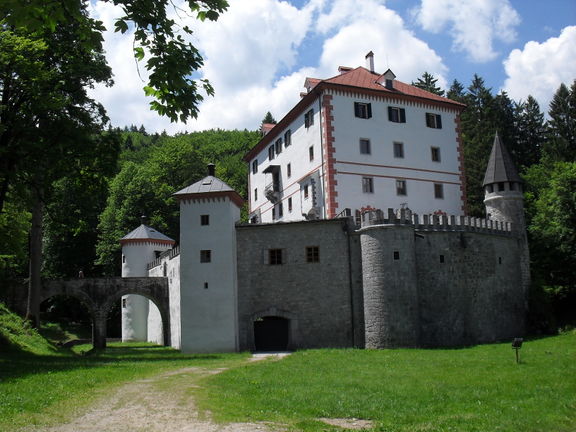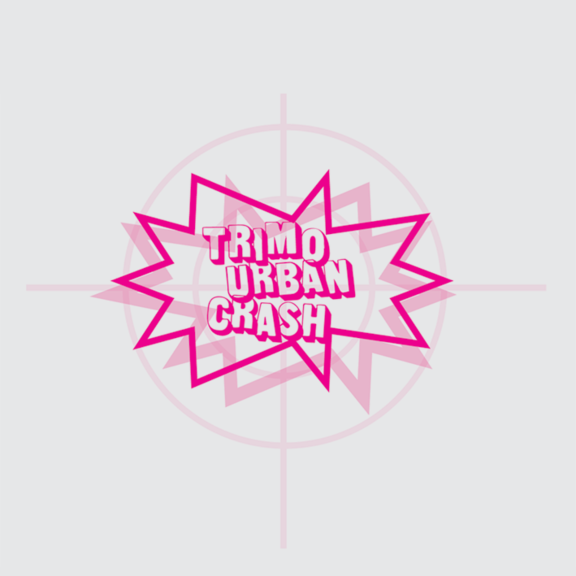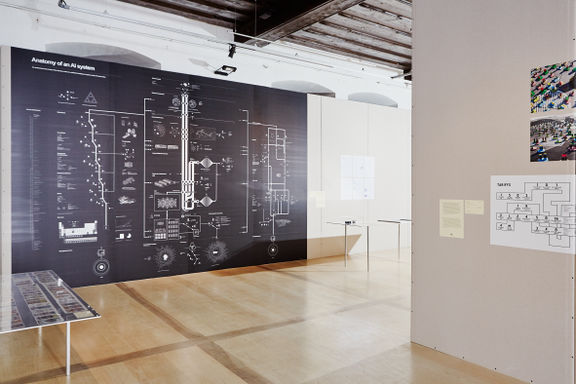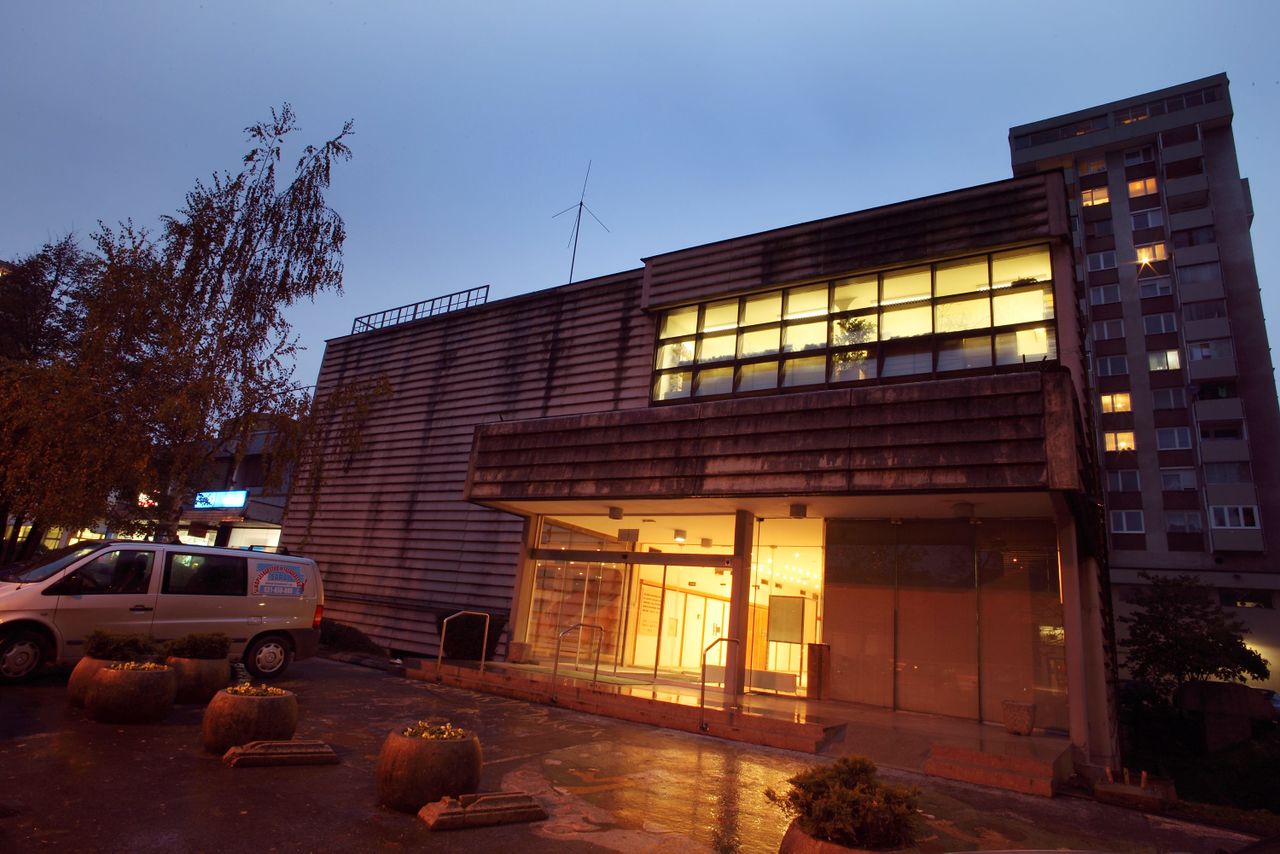 The front view of the Španski borci Culture Centre.
The front view of the Španski borci Culture Centre.
Španski borci Culture Centre re-opened in November 2009 in the Ljubljana-Moste neighbourhood of the city. Run by En-Knap Productions, the centre represents the largest facility intended for cultural activities in Slovenia managed by a non-governmental organisation. Providing a much-needed performing space in Ljubljana as well as two rehearsal spaces, the centre's programme focuses on stage arts, however, it also cover the areas of music, visual arts, literature, and offers a children's programme. The centre also includes a reading room, mediatheque, coffee shop and gallery.
As the permanent residence of the EnKnapGroup (EKG) and one of the venues of the Gibanica (Moving Cake) Festival of Slovene Dance, the Španski borci Culture Centre has been slated since June 2011 to become the seat of the new Centre of Contemporary Dance, according to the agreement signed by the Ministry of Culture and the Municipality of Ljubljana.
NOT ROBOT, WRITING DONE, NEEDSUPDATE, NOVERIFY, NODEPO, PHOTO, Article, Dance, Theatre & Dance, Theatre, NIFERTIK, Music, INFOBOX, TOPROOFREAD, HAS LOGO, HAS MAP, Public entities, Visual arts, Venues, Literature venues, Literature, Visual arts venues, Articles maintained by Tonko Sekulo, Music venues, Theatre venues, COVER, Cultural centres, Contemporary dance, Dance venues

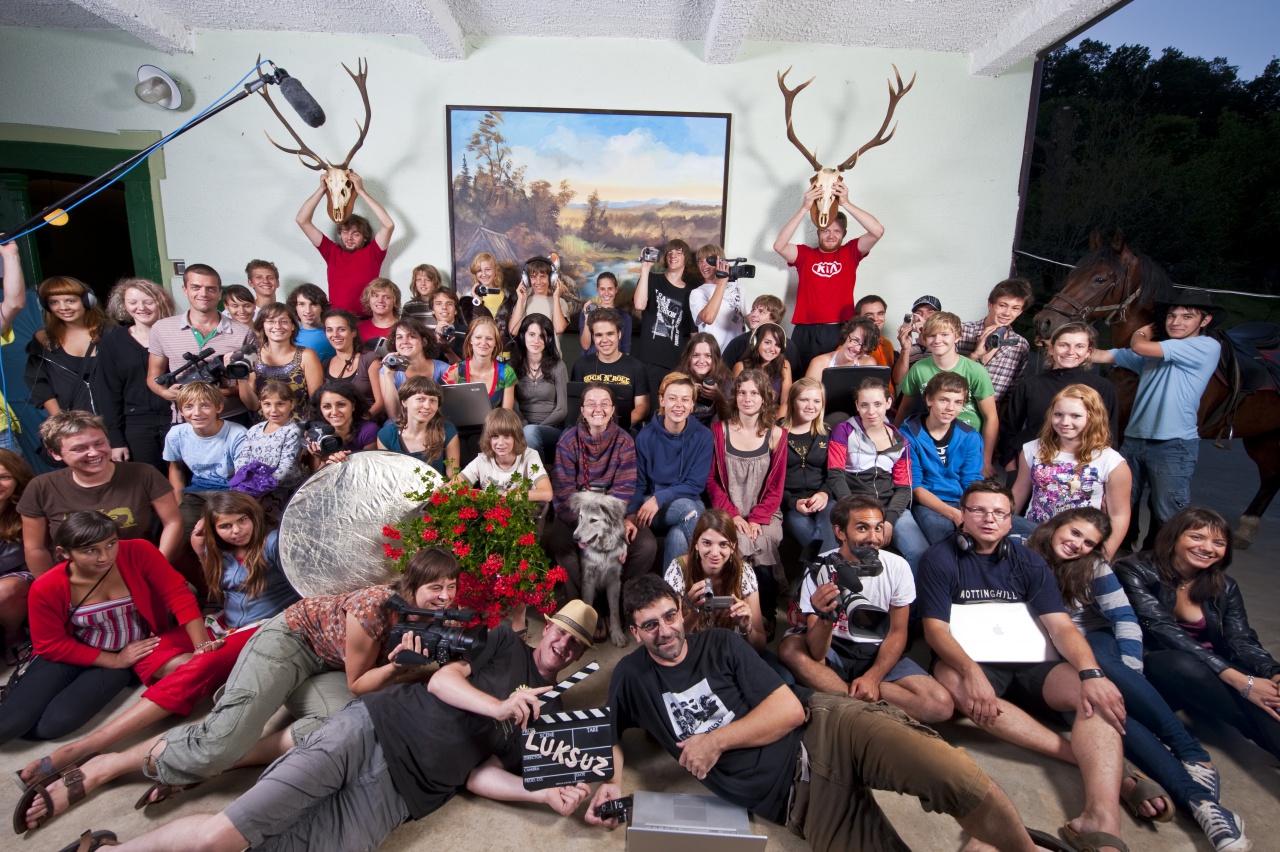 Poster for the Luksuz Cheap Film Festival, established in 2003 by Luksuz Production, as a showcase for short and low-budget film productions by experimental and alternative directors and activists
Poster for the Luksuz Cheap Film Festival, established in 2003 by Luksuz Production, as a showcase for short and low-budget film productions by experimental and alternative directors and activists
Luksuz Cheap Film Festival was established in 2003 by Luksuz Production, the video production arm of the Society of Allies for Soft Landing, Krško (DZMP), motivated by the advent of cheap film production in recent years and the consequent democratisation of media. The festival features some 30 short and low-budget film productions by both domestic and foreign experimental and alternative directors and activists, created in a non-commercial or non-institutional context and offering an alternative to mainstream "Hollywood" and national film productions. Luksuz Festival welcomes films that tackle the subject of society and culture, social critique, cultural diversity and youth culture.
The 2023 edition takes place on the Rajhenburg Castle in Brestanica.
NOT ROBOT, WRITING DONE, INFOBOX DONE, PROOFREAD DONE, FERTIK, NOVERIFY, NODEPO, PHOTO, FEATURED, Article, HAS LOGO, Festivals, Articles maintained by Ziga Brdnik, Film, Film festivals, COVER, Festivals in August
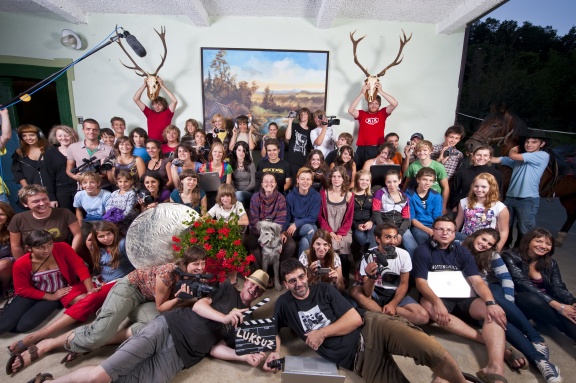
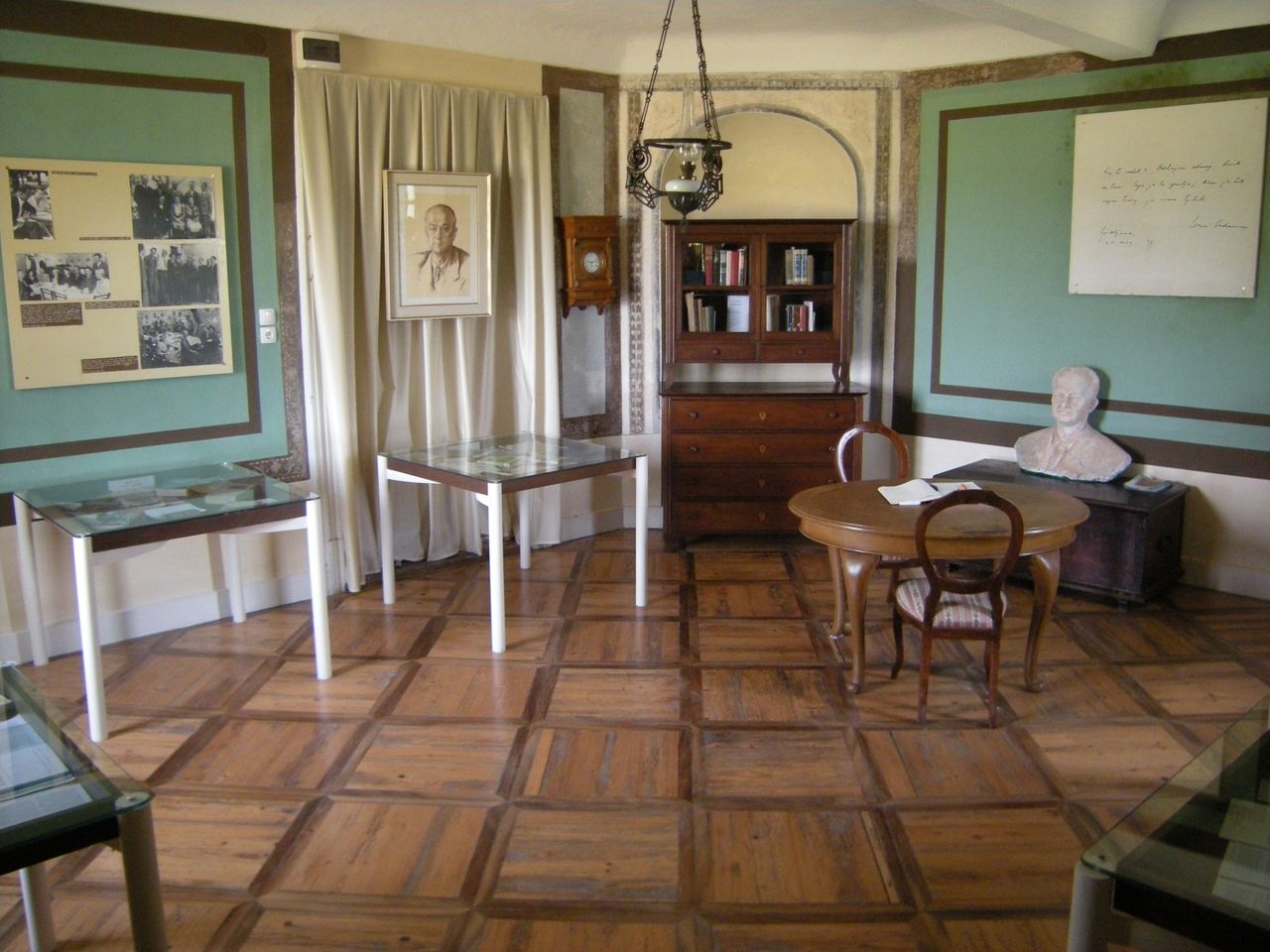 The Louis Adamič Memorial Room was established in 1956 by the Slovene Emigrant Association to commemorate his important literature contribution dealing with the social and political concerns of both his birthplace and his adopted country America
The Louis Adamič Memorial Room was established in 1956 by the Slovene Emigrant Association to commemorate his important literature contribution dealing with the social and political concerns of both his birthplace and his adopted country America
The Louis Adamič Memorial Room is housed in Praproče, the birthplace of Louis Adamič (1898–1951), a Slovene writer who spent most of his life in the USA after emigrating there in 1913 at the age of 14. Known in the United States as Adamic (a-dam'ik), his literature dealt with the social and political issues of both countries (for example, Dynamite, The Native's Return, The Eagle and the Roots).
The collections of Adamič's legacy are dispersed throughout various archives in Slovenia and the USA. The most important is the one at Princeton University (books from his own library, manuscripts and correspondence, clippings). In Slovenia, the memorial room is placed in the tower of the country mansion in Praproče, where Adamič spent his childhood.
NOT ROBOT, WRITING DONE, INFOBOX DONE, PROOFREAD DONE, FERTIK, NOVERIFY, NODEPO, PHOTO, FEATURED, Article, HAS MAP, Public entities, Museums, Articles maintained by Admin, Monuments and sites, Literature museums, Literature museums and archives, COVER, Slovenians abroad
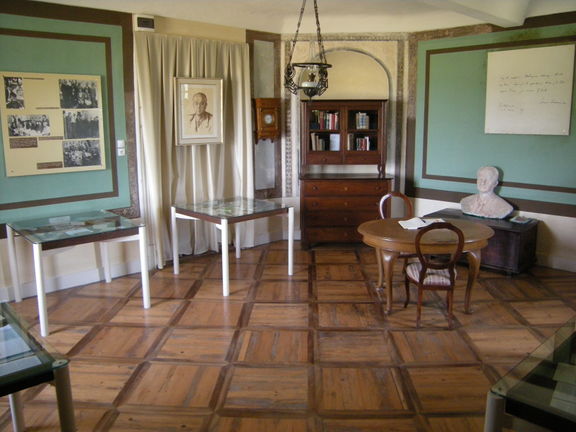
 The main entrance to Kino Šiška, 2017
The main entrance to Kino Šiška, 2017
Kino Šiška is one of the main cultural centres in Ljubljana. Established in 2009, it is a highly industrious institution in terms of artistic scope, dealing with music, film, visual and new media art, theatre, and contemporary dance as well as with various other cultural endeavours. However, its main trade is that of music concerts, with the acts ranging from indie rock and alternative pop to experimental electronica and old school heavy metal.
Besides its 300 or so events per year, Kino Šiška also runs various programmes for finding and supporting upcoming artists, does international promotion for Slovene artists, runs a visual arts sales gallery DobraVaga, and collaborates with the local community.
NOT ROBOT, WRITING DONE, INFOBOX DONE, PROOFREAD DONE, FERTIK, NOVERIFY, NODEPO, PHOTO, FEATURED, Article, Producers, Theatre producers, Articles maintained by Anže Zorman, Music, HAS LOGO, EU funding of Slovene organisations (Culture and MEDIA Programmes), EU Culture funding recipient, Updated 2017, HAS MAP, Public entities, Venues, Visual arts exhibition organisers, Exhibition organisers, EU Creative Europe, Culture funding recipient, Event organisers, Music event organisers, Music festival and event organisers, Visual arts venues, Music venues, Concert halls, Exhibition venues, Theatre event organisers, Šiška Cultural Quarter, Theatre festival and event organisers, Theatre venues, Dance producers, COVER, Cultural centres, New media art event organisers, New media art festival and event organisers, Cafés, New media art venues, Music festival organisers, Dance event organisers, Dance venues, Dance festival and event organisers
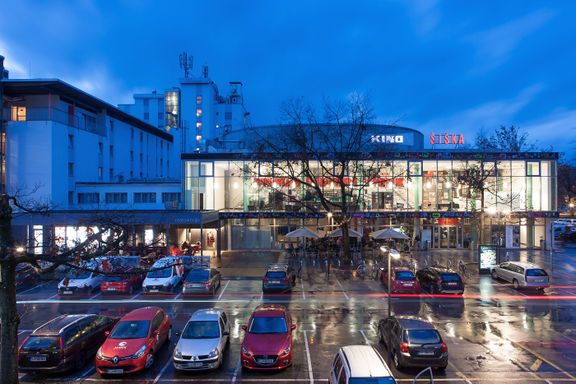
Established in 1970, Glej Theatre is the oldest independent performing arts venue in Ljubljana. An important theatre production and education institution, Glej has been striving to explore theatrical practices in novel and daring ways ever since its early days. It remains a place open to unorthodox approaches and theatrical research, fore-fronting the upcoming generations of artists.
NOT ROBOT, WRITING DONE, INFOBOX DONE, PROOFREAD DONE, FERTIK, NOVERIFY, NODEPO, Articles maintained by Katja Kosi, PHOTO, FEATURED, Article, Groups, Theatre & Dance, Producers, Theatre, Theatre producers, Theatre groups, HAS LOGO, EU funding of Slovene organisations (Culture and MEDIA Programmes), EU Culture funding recipient, Updated 2017, HAS MAP, Venues, EU Creative Europe, Culture funding recipient, Event organisers, Festival organisers, Puppetry event organisers, Puppetry, Puppetry festival and event organisers, Theatre festival organisers, Theatre festival and event organisers, Theatre venues
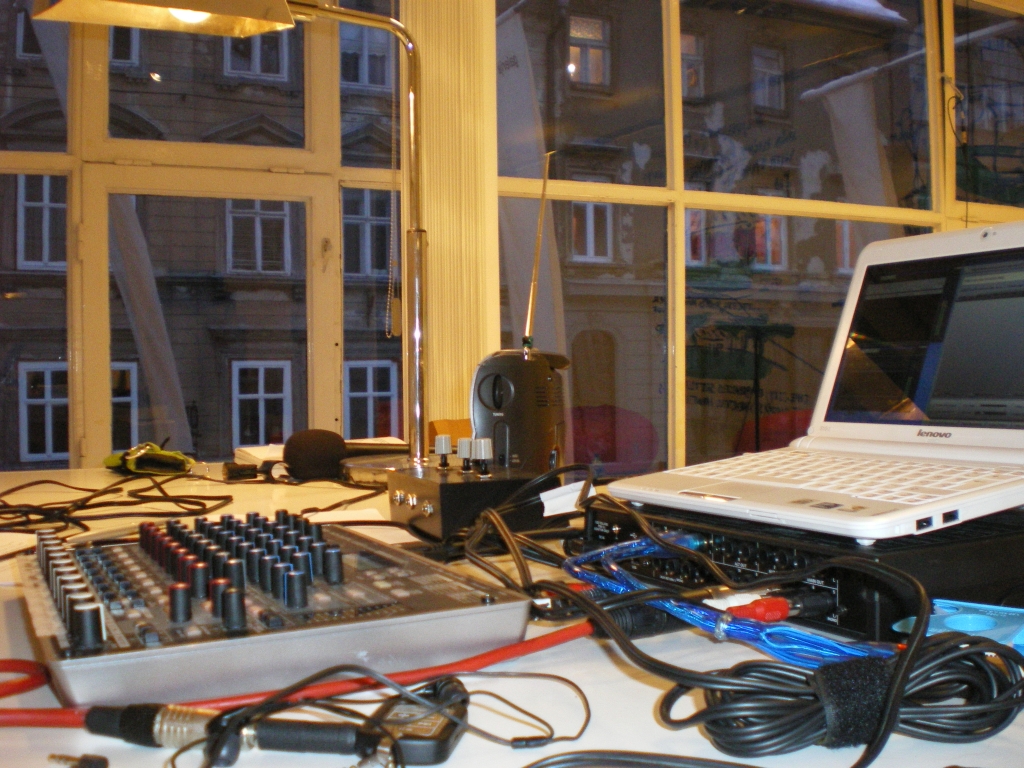 RadioCona
RadioCona
RadioCona is a temporary radio project for contemporary arts established in 2008 by Cona Institute, an institute for contemporary arts processing. The radio has become an important agent in claiming public radio-frequency space for artistic and broader social contexts. It runs an occasional innovative programme of its own production and serves as a common platform for various contemporary visual or performing arts events in Ljubljana.
radioCona maintains an important online audio archive of new media art, experimental music and recorded events such as round tables and debates on the major issues concerning the free-lance and independent production in Slovenia (cultural policy, public space and copyright) as well as international symposia (Reflective Dramaturgy by Maska Institute in the frame of the 2010 Ukrep - Festival of Dance Perspectives, for example). The archive is freely accessible on the radioCona blog.
NOT ROBOT, WRITING DONE, INFOBOX DONE, PROOFREAD DONE, FERTIK, NOVERIFY, NODEPO, PHOTO, FEATURED, Article, HAS LOGO, New media art, Media, Funding, professional and support services, Archives & Libraries, Support services, Articles maintained by Admin, New media art support services, Visual arts support services, New media art funding, professional and support services, Archives, Studios, COVER, New media art studios, New media art archives, New media art archives and libraries, Broadcasting, Radio, Media studios, Visual arts online media, New media art online media
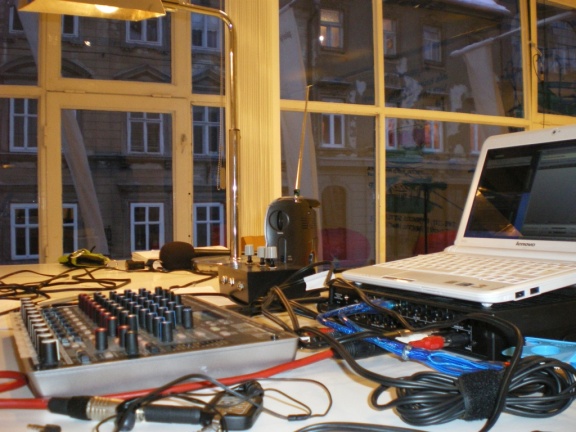
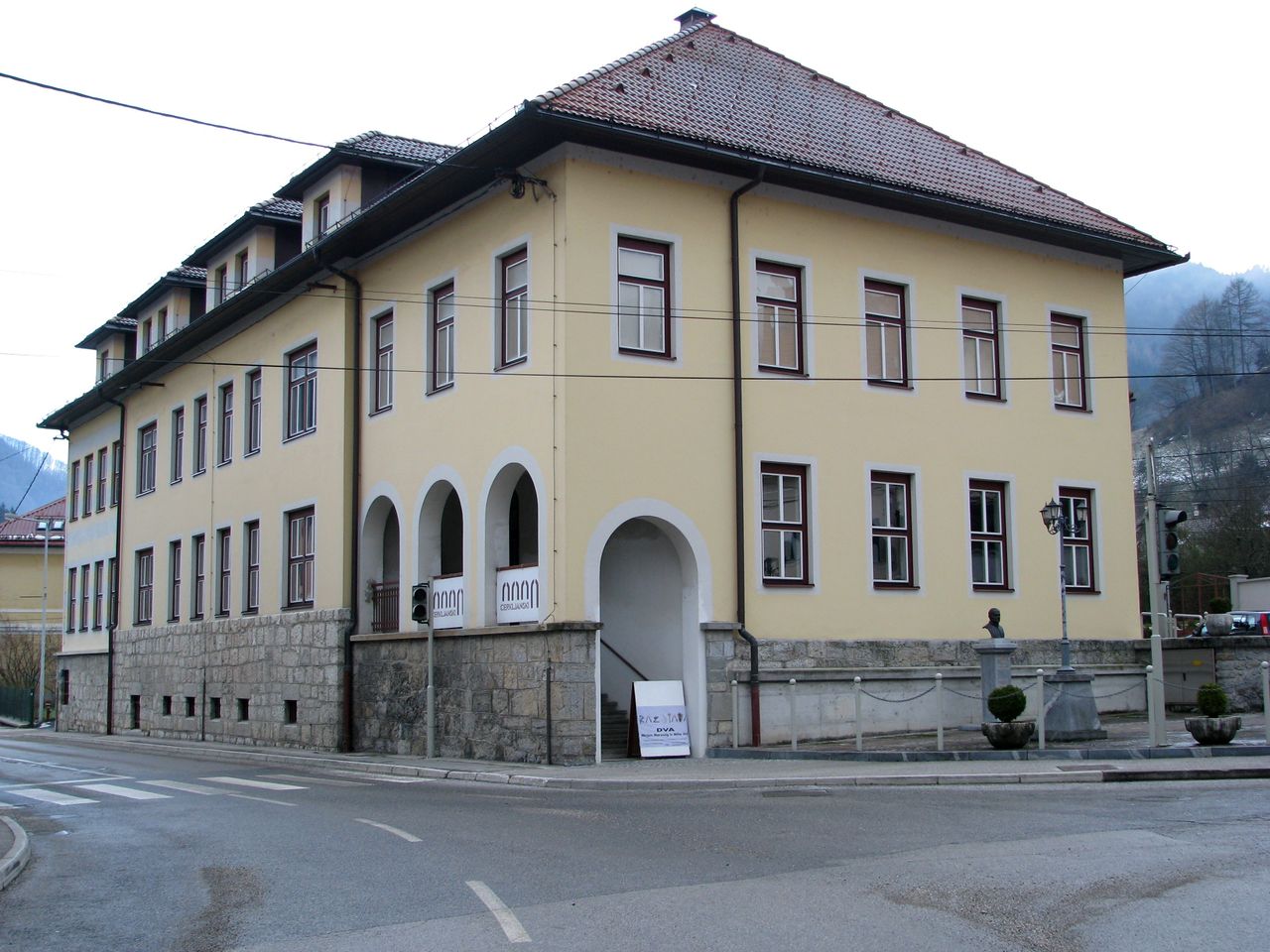 The Cerkno Museum was established by Idrija Municipal Museum in 1978 as a branch museum about the NOB (National Liberation Struggle). The institution studies the rich heritage of the Cerkno region in an integral way
The Cerkno Museum was established by Idrija Municipal Museum in 1978 as a branch museum about the NOB (National Liberation Struggle). The institution studies the rich heritage of the Cerkno region in an integral way
The Cerkno Museum was established by Idrija Municipal Museum in 1978 as a branch museum about the NOB (National Liberation Struggle). Today this institution is the only one that studies the rich heritage of the Cerkno region in an integral way.
In 2006, on the 50th anniversary of the revival of the Cerkljanska Laufarija, a new permanent exhibition entitled Pust is to Blame! - A Story about the Cerkno Laufarija was put on display. The Cerkno laufarji are among the most famous carnival figures in Slovenia, whose wooden masks called larfa are cut from the wood of the linden tree.
NOT ROBOT, WRITING DONE, INFOBOX DONE, PROOFREAD DONE, FERTIK, NOVERIFY, NODEPO, PHOTO, FEATURED, Article, HAS LOGO, Updated 2020, HAS MAP, Museums, Intangible heritage, Articles maintained by Ivan Pirnat, COVER
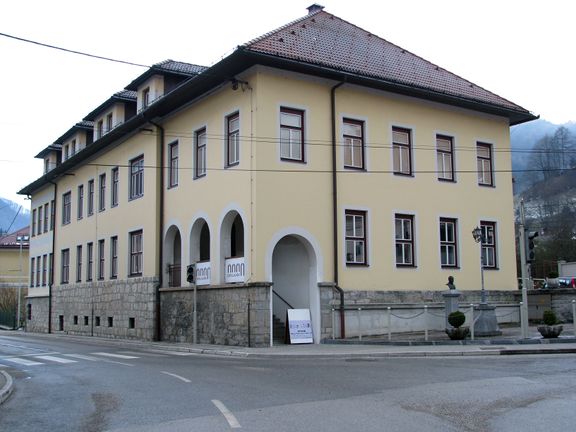
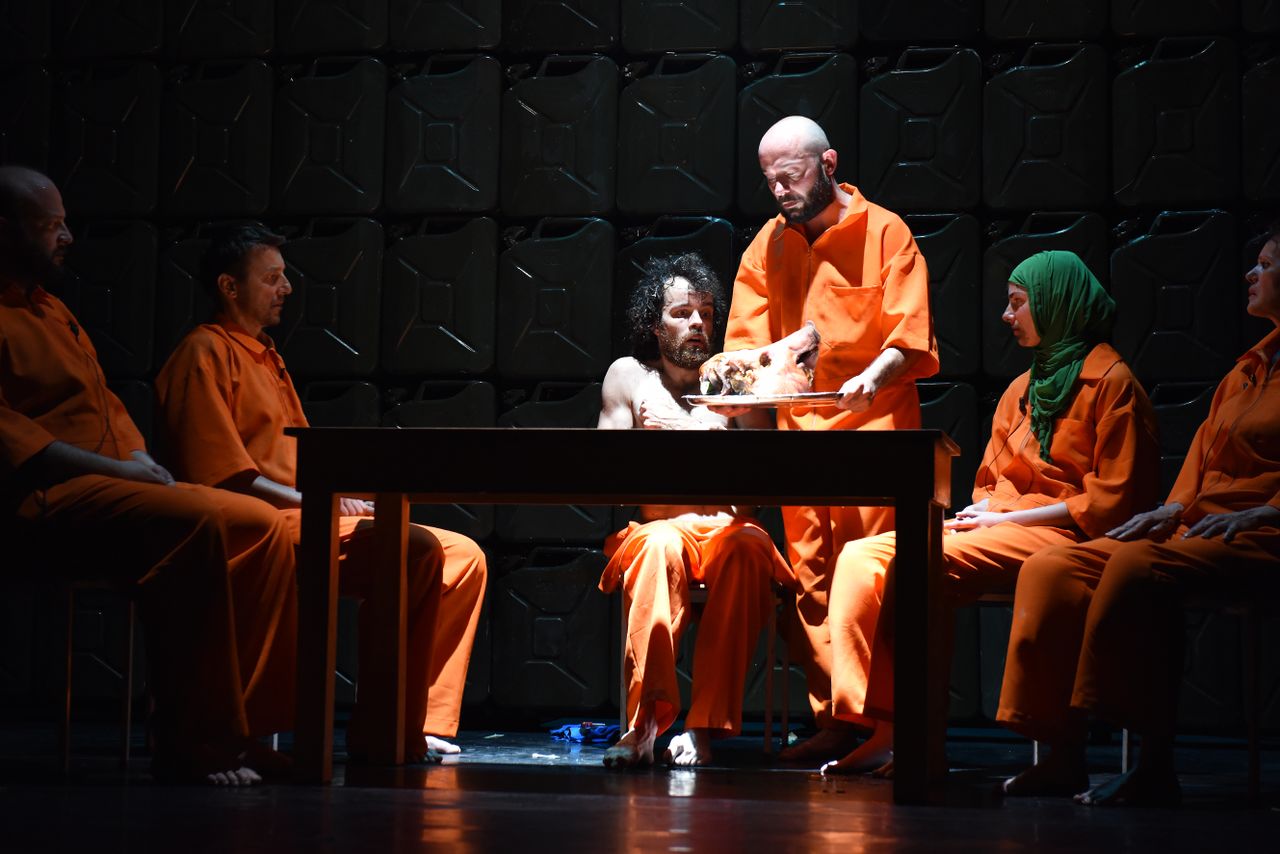 Our Violence and Your Violence, a play by Oliver Frljić, performed at Wiener Festwochen and produced by Mladinsko Theatre, 2016
Our Violence and Your Violence, a play by Oliver Frljić, performed at Wiener Festwochen and produced by Mladinsko Theatre, 2016
Mladinsko Theatre (Slovensko mladinsko gledališče) is one of two municipal theatres in Ljubljana and is considered to be a laboratory for actors and directors, choreographers and musicians to research and develop, risk and create. Throughout its history, Mladinsko has collaborated with the reformers of the Slovene theatre of the second half of the 20th century.
NOT ROBOT, WRITING DONE, INFOBOX DONE, PROOFREAD DONE, FERTIK, NOVERIFY, NODEPO, PHOTO, FEATURED, Article, Theatre & Dance, Producers, Theatre, Theatre producers, Articles maintained by Anže Zorman, Maribor, European Capital of Culture 2012, HAS LOGO, EU funding of Slovene organisations (Culture and MEDIA Programmes), EU Culture funding recipient, HAS MAP, Public entities, Venues, Festival organisers, Theatre festival organisers, Theatre festival and event organisers, Theatre houses, Theatre venues, Municipal cultural institutions, COVER, Theatre archives, Theatre archives and libraries
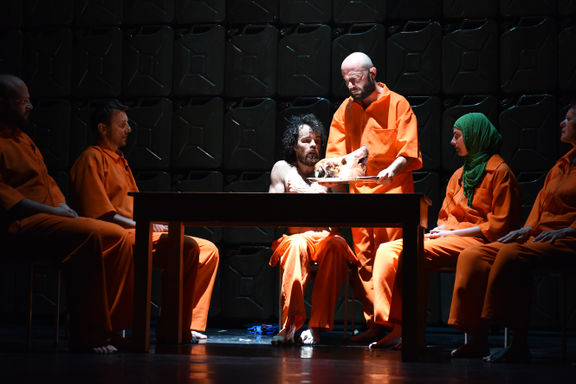
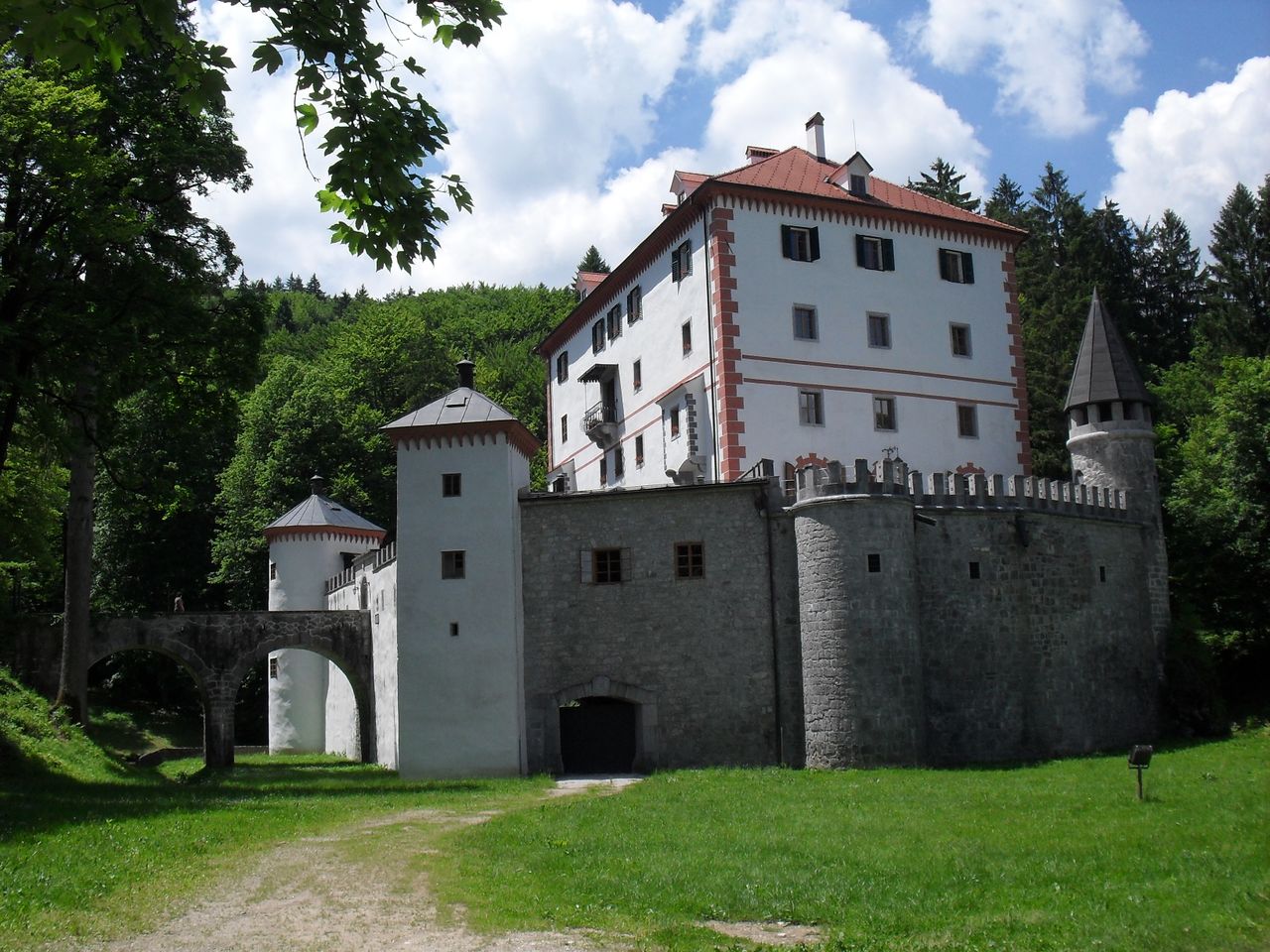 Snežnik Castle, being the only Slovene Castle with genuine furnished interiors, came under the administration of the National Museum of Slovenia after its restoration in 2008.
Snežnik Castle, being the only Slovene Castle with genuine furnished interiors, came under the administration of the National Museum of Slovenia after its restoration in 2008.
The earliest record of Snežnik Castle dates from 1269 when it was owned by the patriarchs of Aquileia. The castle lies on a strategic site, on the edge of the Lož Valley under the Snežnik mountains surrounded by a beautiful park and vast forests with diverse and rich flora and fauna including big game ranging from bears, boars, wolves and lynxes, to wild fowl and deer, and was always favourite hunting residence. Throughout the centuries the castle has changed owners many times, but in 1853 the castle and associated forests of Snežnik were bought by German Prince Otto Viktor Schönburg-Waldenburg, who gave it to his third son Georg. Thereafter it remained in the Schönburg-Waldenburg family until 1945. The last caretaker Leon Schauta saved Snežnik Castle from destruction after the Second World War by keeping good relations with the locals before and after the war. Restoration began in the 1960s and the castle opened to the public in 1970/71. In 1983 two additional exhibition rooms were opened. After a restoration completed in 2008, the romantic state-owned castle came under the administration of the National Museum of Slovenia and is the only Slovene Castle with genuine furnished interiors.
Since 2014 the Floating Castle Festival has embedded into the picturesque surroundings of the castle the late summer "folk-puppet-music-theatre site-specific event".
NOT ROBOT, WRITING DONE, INFOBOX DONE, PROOFREAD DONE, FERTIK, NOVERIFY, NODEPO, PHOTO, FEATURED, Article, NO LOGO, HAS MAP, Museums, Monuments and sites, Articles maintained by Ivan Pirnat, Castles, COVER
